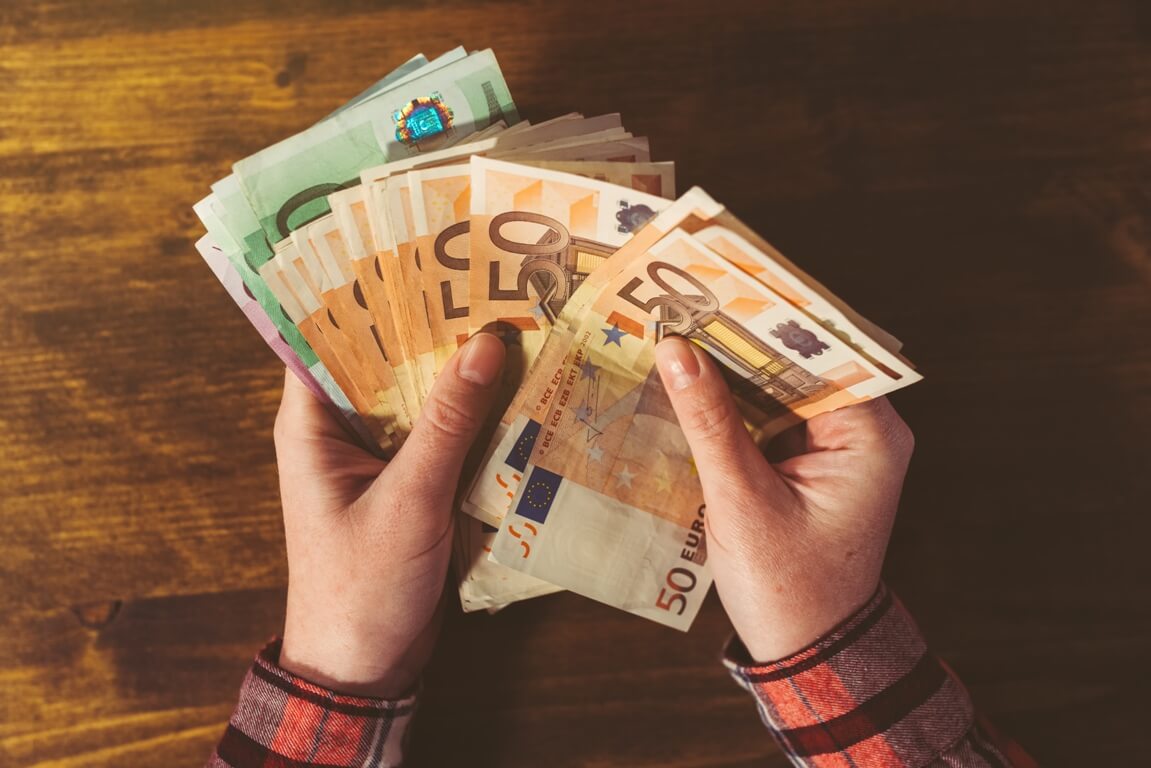The euro plunged below $1.06 for the first time in five years versus a rallying U.S. dollar on Wednesday. Rising concerns around energy safety, along with the growth slowdown in China and Europe, prompted investors to move on to the safe-haven currencies. As a result, the common currency dropped to a five-year low of $1.05890. It declined rapidly after Russia’s Gazprom announced that it would cut gas supply to Poland and Bulgaria. At last, the euro traded 0.16% lower at $1.0616.
Overall, the common currency has plummeted by more than 4% in April. It is heading for its worst monthly loss in more than seven years. Uncertainty around the war in Ukraine and China’s coronavirus lockdown measures led market participants to abandon the euro in favor of the safe-haven greenback.
Francesco Pesole, the currency strategist at ING, noted that turbulent markets mean supported USD. According to new data, consumer confidence decreased more than expected in France in April. Considering that it’s the eurozone’s second-largest economy, that is concerning news.
Meanwhile, the U.S. dollar index jumped by 0.3% to 102.6 against a basket of six major currencies after hitting its highest level since the early days of the pandemic. Traders wager that rates are going higher faster in the United States than in any other major economy. Such speculation is also supporting the dollar index. Pesole stated that with risk assets continuing to show instability and Forex markets having now made a conviction call on the Federal Reserve’s aggressive tightening cycle, the greenback has likely found a new floor.
Has the Chinese Yuan rebounded after its recent fall?
On Wednesday, the Chinese yuan managed to recover a bit after plunging to a 13-month low on Monday. It steadied at 6.5547 per dollar after new data showed Chinese industrial profit growth accelerating in March.
In Europe, the Sterling hit a fresh 21-month low of $1.2543. Overall, the currency shaved off more than 2% against the greenback this week. Soft retail sales data has prompted investors to rethink Britain’s rates outlook. Furthermore, commodity currencies have sold lately in favor of the safety of the USD. As a result, the New Zealand dollar hit its lowest level since January at $0.6551. The Norwegian crown also tumbled down against the USD to its lowest level of 9.2200 since November 2020.
The Australian dollar has briefly dropped to its lowest level since February. However, it managed to catch some wind after Australian consumer prices rallied at their fastest annual pace in two decades. That spurred speculation that interest rates could be lifted from record lows as soon as next week. Consequently, the Aussie climbed up by 0.3% to $0.7149.
The stronger greenback dented an attempted bounce for the Japanese yen, though. The latter had seen some support from safety flows, as well as positioning for the risk of a policy shift. Despite that, the yen traded lower by 0.7% at 127.93 per dollar at last. The Bank of Japan meets today and tomorrow. Forex markets see some risk of adjustment to forecasts or even policy changes. That could cause the yen to stay in the red for some time.
How are the EM currencies faring?
The South Korean won collapsed on Wednesday, plunging to a two-year low after North Korea promised to boost its nuclear arsenal. Most Asian currencies also decreased against a stronger dollar today due to the expectations that the U.S. Federal Reserve will hike interest rates aggressively next week. Fears of a sharp slowdown in China aren’t helping. DBS analyst Eugene Leow noted that while traders prepare themselves for a potential half-point interest rate increase in the world’s largest economy when the U.S. Fed meets on May 3-4, the backdrop remains challenging for Asia rates. He added that the underperformance of Asia rates is likely in the coming days.
Most currencies in Southeast Asia traded in the red. The Thai baht declined to its weakest level since May 2017, while the Taiwan dollar shaved off 0.3%. The South Korean won also fell by more than 1%, hitting its lowest level since March 2020. North Korean leader Kim Jong Un announced that the government would speed up the development of his country’s nuclear arsenal. North Korea’s state media also showed him overseeing a huge military parade. The latter displayed intercontinental ballistic missiles on Monday night.











